DMI – Graduate Course in Computer Science
Copyleft
![]() 2018 Giuseppe Scollo
2018 Giuseppe Scollo
this tutorial deals with:
development main phases:
two VHDL sources implement the memory-mapped coprocessor:
both files are avaulable in the vhdl folder of the attached archive, as well as in the VHDL/code/e11 folder of the reserved lab area
consultation of the delay_collatz_interface.vhd source shows the relationships between the I/O signals of the computational component and the Avalon interface signals
folder codesign in the attached archive is preset to host the project development
after creation of project delay_collatz_codesign, with top-level entity having the same name, the construction of the custom component delay_collatz_interface may proceed
the new component type definition is shown in the figure

the next step is the assignment of VHDL files that describe the component and their analysis, as shown in the figure
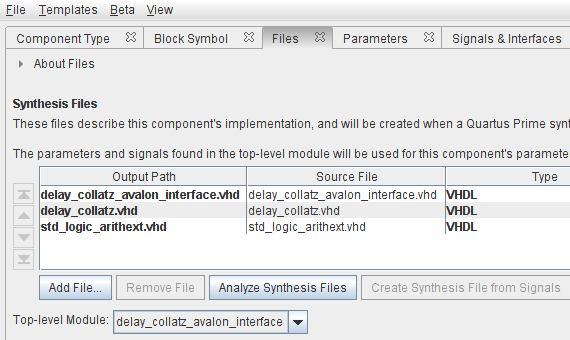
finally, the new component definition ends with the definition of its Avalon interfaces and placement of its signals under the appropriate interfaces, as shown in the figure
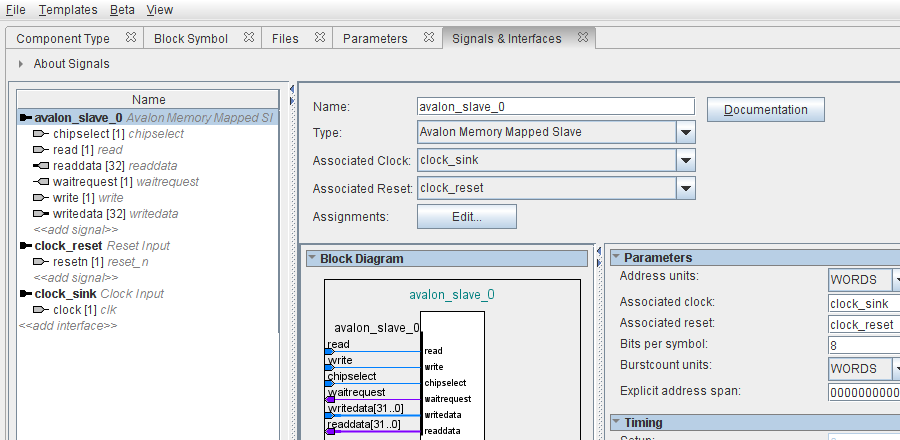
for the construction of the Nios II system shown in the previous figures it may be useful to consult the Qsys introduction tutorial
the final steps to map the system to the FPGA are as follows:
in Qsys:
exit Qsys, then in Quartus:
folder script in the attached archive contains two TCL scripts for the generation of the software driver in the BSP for the project
these two scripts are to be copied in folder codesign/ip/delay_collatz_avalon_interface
the TCL scripts were written by analogy with the TCL script for the software
driver of the Performance Counter, available in the Quartus Prime Lite 16.1
distribution under path
$SOPC_KIT_NIOS2/../ip/altera/sopc_builder_ip/altera_avalon_performance_counter
the motivation for this, perhaps unorthodox, way of producing the software driver lies in the twofold fact that
together with a somewhat reasonable level of operational analogy between the two components
folder src in the attached archive contains the subject programs, which are to be copied in the provided folders for the creation of test and performance measurement projects under the Monitor Program, as follows:
project creation parameters are summarized in the attached file MonitorNotes.txt
main differences between the source of lab tutorial 09 and the present sequential version:
the pipelined version of the program exhibits much stronger differences with respect to the program of lab tutorial 09:
the synchronization mechanism is very simple, thanks to properties of the custom component and of the waitrequest signal of the Avalon MM protocol:
compilation, loading on the FPGA and execution of program delay_collatz_sequential_timing.c, in the two projects codesign/amp_s and codesign/amp_s_o3, produces the Performance Counter Reports in the figure
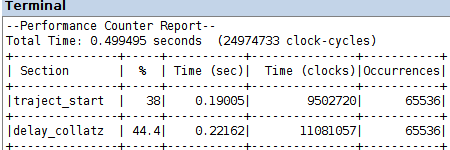
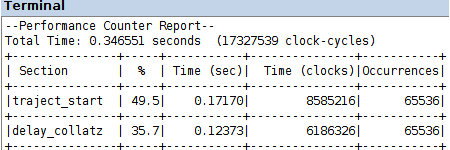
a speed-up by an order of magnitude, w.r.t. the software computation in lab tutorial 09, results from the performance data in that case, with the same optimization levels
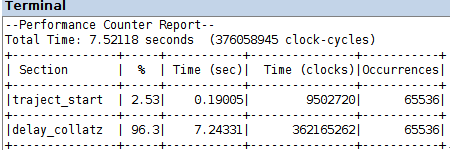
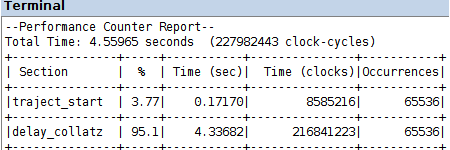
it is sensible to expect a further performance gain out of the nonblocking execution of the computation by the custom hardware
the comparison of the following Performance Counter Reports with the corresponding data for the implementation with all computation done in software, yields a 21x speed-up with default optimization O1 and a 16x speed-up with optimization O3; the corresponding speed-up values with blocking acceleration are 15x with O1 and 13x with O3
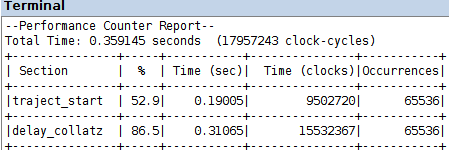

useful materials for the proposed lab experience: